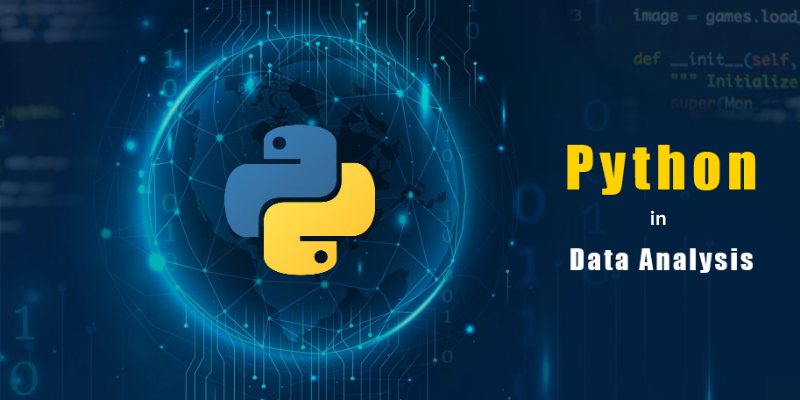
Python has become a cornerstone in big data analytics, widely recognised for its simplicity and versatility. Its robust libraries and frameworks empower data scientists to manipulate, analyze, and visualize vast datasets effectively. With seamless integration into popular big data tools, Python enhances the ability to extract actionable insights in real-time. As big data continues to expand, Python’s role in this domain is more critical than ever. Join the Python Course in Ahmedabad, which provides practical experience along with job placement assistance.
The Importance of Python in Big Data Analytics
Python has emerged as a dominant language in the realm of big data analytics thanks to its simplicity, versatility, and robust ecosystem of libraries. Its readability and ease of use make it an ideal choice for both beginners and experienced data professionals. Python’s ability to integrate with various data platforms and its extensive library support allows analysts and data scientists to efficiently handle vast amounts of data, making it a powerful tool for big data analytics.
Libraries and Frameworks for Data Analysis
Python boasts a rich set of libraries specifically designed for data manipulation and analysis. Libraries such as Pandas provide high-performance data structures and data analysis tools, enabling users to work with structured data seamlessly. NumPy enhances this by offering support for large, multi-dimensional arrays and matrices, along with a collection of mathematical functions. These libraries allow data scientists to perform complex data manipulations and analyses with minimal code, thereby accelerating the data analysis process. To understand the latest trends in Python development, join the Python Course in Gurgaon.
For more advanced data analysis, SciPy extends NumPy’s capabilities with additional functions for optimisation, integration, interpolation, eigenvalue problems, and more. This makes Python suitable for scientific computing tasks where big data analysis intersects with engineering or research applications.
Data Visualization
Visualising data is crucial in big data analytics, and Python excels in this area with libraries. Matplotlib provides a comprehensive suite for creating static, animated, and interactive visualisations, while Seaborn builds on Matplotlib to offer a higher-level interface for drawing attractive statistical graphics. These visualisation tools help data analysts and stakeholders understand complex datasets and derive insights through intuitive visual representations. The ability to create clear and compelling visualisations makes Python an invaluable asset for presenting findings derived from big data. Join the Data Science Course in Jaipur, where you’ll gain expertise in data visualisation concepts and data science tools.
Machine Learning Integration
The integration of machine learning capabilities within Python further enhances its role in big data analytics. Libraries provide a range of machine learning algorithms and tools for data preprocessing, model selection, and evaluation. This accessibility allows data analysts to build and deploy machine learning models quickly, enabling them to glean insights and make predictions based on large datasets. Furthermore, with the advent of TensorFlow and PyTorch, Python also supports deep learning techniques, allowing analysts to tackle even more complex problems, such as image and speech recognition, within big data contexts.
Big Data Tools Compatibility
Python’s compatibility with various big data tools and platforms makes it a go-to choice for data analysts. It can seamlessly interact with big data frameworks. Through the PySpark library, data scientists can utilise the power of Apache Spark in a Pythonic way, enabling distributed data processing across clusters. This capability is critical for analysing massive datasets that exceed the capacity of traditional data processing systems. The ability to perform in-memory data processing with Spark enhances the speed and efficiency of big data analytics, making Python a key player in this space. Explore Python Course in Kolkata to gain a comprehensive understanding of OOP concepts in Python.
Real-time Data Processing
In today’s fast-paced data environment, the ability to analyse real-time data is crucial. Python supports real-time data processing through libraries and frameworks. These tools enable data analysts to build applications that can process and visualise data in real time, allowing businesses to make timely decisions based on the most current data. This capability is especially beneficial for industries like finance, e-commerce, and social media, where real-time insights can significantly impact business outcomes.
Data Cleaning and Preprocessing
Data cleaning and preprocessing are often the most time-consuming tasks in big data analytics. Python simplifies these processes through libraries. Data scientists can easily identify and handle missing values, and remove duplicates. They also perform transformations to ensure the data is clean and ready for analysis. The ability to write concise and readable code for data-cleaning tasks saves analysts considerable time and effort, allowing them to focus on extracting insights from the data. Enrol in a Python Course in Jaipur to become a Python Developer.
Community Support and Resources
Python plays a pivotal role in big data analytics due to its rich ecosystem of libraries, ease of use, and strong community support. Its ability to integrate with big data tools, facilitate machine learning, and visualise data effectively makes it an indispensable asset for data analysts. As the field of big data continues to grow, Python will likely maintain its status as a leading programming language, empowering professionals to harness the power of big data for insights and decision-making. Enrolling in a Python Course in Delhi could represent a major leap forward in your career.
Also Check: Python Interview Questions and Answers